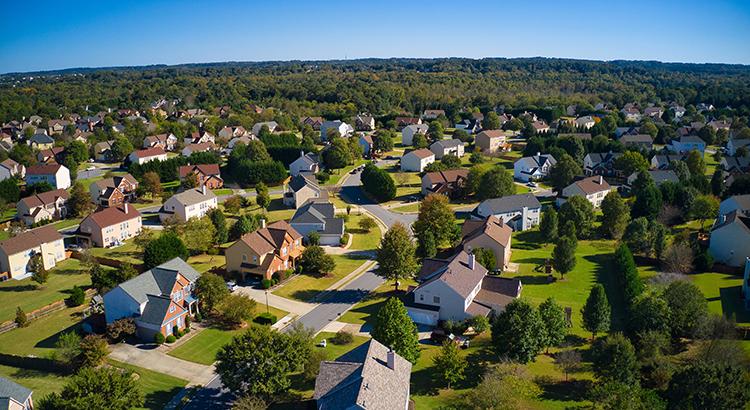How to Leverage Virtual Tours and Digital Marketing in Real Estate
In today’s competitive real estate market, staying ahead of the curve requires adopting innovative technologies and marketing strategies. One of the most effective ways to engage potential buyers and sellers is by leveraging virtual tours and digital marketing. These tools not only provide a more immersive experience but also help real estate agents and property owners reach a broader audience. In this blog, we'll explore how to harness the power of virtual tours and digital marketing to maximize your real estate success.
The Rise of Virtual Tours in Real Estate
Virtual tours have become a game-changer in the real estate industry. With advancements in technology, these tours offer a realistic and detailed view of properties, allowing prospective buyers to explore homes from the comfort of their own spaces. Here’s why virtual tours are essential for modern real estate marketing:
Enhanced Buyer Experience: Virtual tours allow buyers to explore every nook and cranny of a property at their own pace. They can view the property as many times as they want, focusing on details that matter to them without feeling rushed.
Time Efficiency: For both buyers and sellers, virtual tours save time. Buyers can narrow down their choices before scheduling in-person visits, while sellers can showcase their property to a larger audience without the hassle of multiple showings.
Increased Engagement: Listings with virtual tours receive significantly more engagement than those without. High-quality, interactive content grabs attention and keeps potential buyers on your listing longer, increasing the likelihood of a sale.
Broader Reach: Virtual tours make it easier to market properties to out-of-town or international buyers who may not be able to visit in person. This expands your potential market and can lead to quicker sales.
Enhanced Buyer Experience: Virtual tours allow buyers to explore every nook and cranny of a property at their own pace. They can view the property as many times as they want, focusing on details that matter to them without feeling rushed.
Time Efficiency: For both buyers and sellers, virtual tours save time. Buyers can narrow down their choices before scheduling in-person visits, while sellers can showcase their property to a larger audience without the hassle of multiple showings.
Increased Engagement: Listings with virtual tours receive significantly more engagement than those without. High-quality, interactive content grabs attention and keeps potential buyers on your listing longer, increasing the likelihood of a sale.
Broader Reach: Virtual tours make it easier to market properties to out-of-town or international buyers who may not be able to visit in person. This expands your potential market and can lead to quicker sales.
The Power of Digital Marketing in Real Estate
While virtual tours are a powerful tool, they work best when combined with a comprehensive digital marketing strategy. Here are key elements to include in your digital marketing efforts:
Search Engine Optimization (SEO): Optimize your property listings and website content to rank higher in search engine results. Use relevant keywords, such as "virtual tour real estate," "3D home tours," and location-specific terms, to attract targeted traffic.
Social Media Marketing: Share your virtual tours across social media platforms like Facebook, Instagram, and LinkedIn. Use high-quality visuals and compelling captions to drive engagement. Consider running targeted ads to reach a broader audience.
Email Campaigns: Send out email newsletters featuring your latest listings with virtual tours. Include a call-to-action that encourages recipients to explore the tour and schedule a showing.
Content Marketing: Create blog posts, videos, and other content that highlights the benefits of virtual tours and digital marketing in real estate. This not only positions you as an expert but also improves your SEO and drives traffic to your listings.
Pay-Per-Click (PPC) Advertising: Invest in PPC campaigns to drive immediate traffic to your listings. Use targeted keywords and demographics to reach potential buyers who are actively searching for properties like yours.
Search Engine Optimization (SEO): Optimize your property listings and website content to rank higher in search engine results. Use relevant keywords, such as "virtual tour real estate," "3D home tours," and location-specific terms, to attract targeted traffic.
Social Media Marketing: Share your virtual tours across social media platforms like Facebook, Instagram, and LinkedIn. Use high-quality visuals and compelling captions to drive engagement. Consider running targeted ads to reach a broader audience.
Email Campaigns: Send out email newsletters featuring your latest listings with virtual tours. Include a call-to-action that encourages recipients to explore the tour and schedule a showing.
Content Marketing: Create blog posts, videos, and other content that highlights the benefits of virtual tours and digital marketing in real estate. This not only positions you as an expert but also improves your SEO and drives traffic to your listings.
Pay-Per-Click (PPC) Advertising: Invest in PPC campaigns to drive immediate traffic to your listings. Use targeted keywords and demographics to reach potential buyers who are actively searching for properties like yours.
Combining Virtual Tours and Digital Marketing for Maximum Impact
The most effective real estate marketing strategies combine virtual tours with digital marketing to create a seamless and immersive experience for potential buyers. Here’s how to integrate these tools for maximum impact:
Embed Virtual Tours in Your Listings: Ensure that every property listing on your website and real estate platforms includes a virtual tour. This makes your listings more attractive and user-friendly.
Promote Virtual Tours Across Channels: Don’t limit your virtual tours to just your website. Share them across all digital channels, including social media, email, and online ads, to maximize visibility.
Use Analytics to Optimize: Track the performance of your virtual tours and digital marketing campaigns. Use data analytics to identify what’s working and make adjustments to improve your strategy.
Offer Virtual Open Houses: Take virtual tours to the next level by hosting live virtual open houses. This allows you to interact with potential buyers in real-time, answer questions, and provide a guided tour experience.
Leveraging virtual tours and digital marketing in real estate is no longer optional—it's essential. By integrating these tools into your marketing strategy, you can provide a superior experience for buyers, increase engagement, and ultimately close more deals. Stay ahead of the competition by embracing these technologies and transforming the way you market properties.
Embed Virtual Tours in Your Listings: Ensure that every property listing on your website and real estate platforms includes a virtual tour. This makes your listings more attractive and user-friendly.
Promote Virtual Tours Across Channels: Don’t limit your virtual tours to just your website. Share them across all digital channels, including social media, email, and online ads, to maximize visibility.
Use Analytics to Optimize: Track the performance of your virtual tours and digital marketing campaigns. Use data analytics to identify what’s working and make adjustments to improve your strategy.
Offer Virtual Open Houses: Take virtual tours to the next level by hosting live virtual open houses. This allows you to interact with potential buyers in real-time, answer questions, and provide a guided tour experience.
Leveraging virtual tours and digital marketing in real estate is no longer optional—it's essential. By integrating these tools into your marketing strategy, you can provide a superior experience for buyers, increase engagement, and ultimately close more deals. Stay ahead of the competition by embracing these technologies and transforming the way you market properties.
Categories
Recent Posts

Why More Homeowners Are Giving Up Their Low Mortgage Rate

The Top 2 Things Homeowners Need To Know Before Selling

Would You Let $80 a Month Hold You Back from Buying a Home?

Why You Don’t Need To Be Afraid of Today’s Mortgage Rates

Planning To Sell in 2026? Start the Prep Now

2026 Housing Market Outlook

Why Home Prices Aren’t Actually Flat

What Buyers Say They Need Most (And How the Market’s Responding)

Why Buyers and Sellers Face Very Different Conditions Today

Why Now May Be a Key 2025 Moment To Sell Your House
GET MORE INFORMATION

